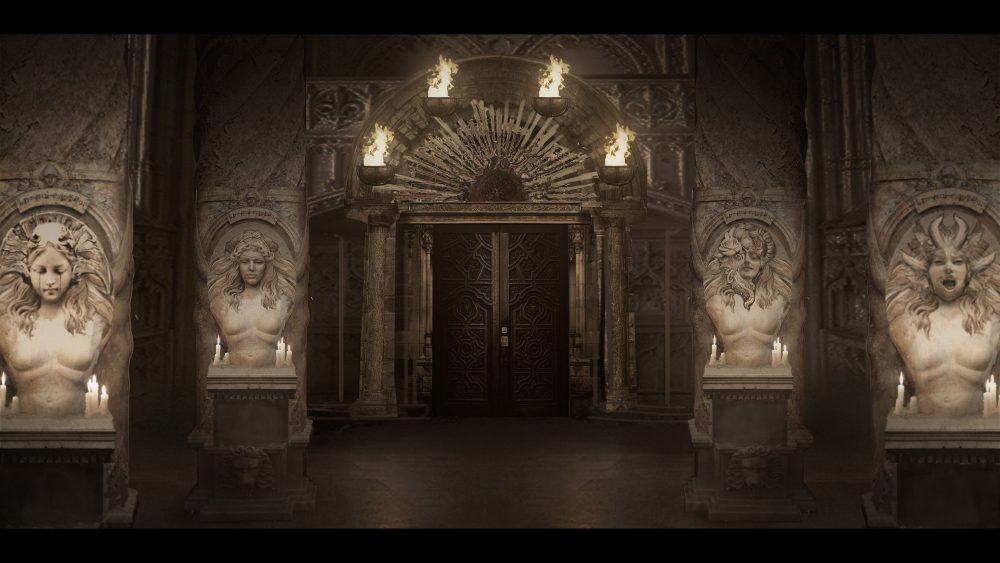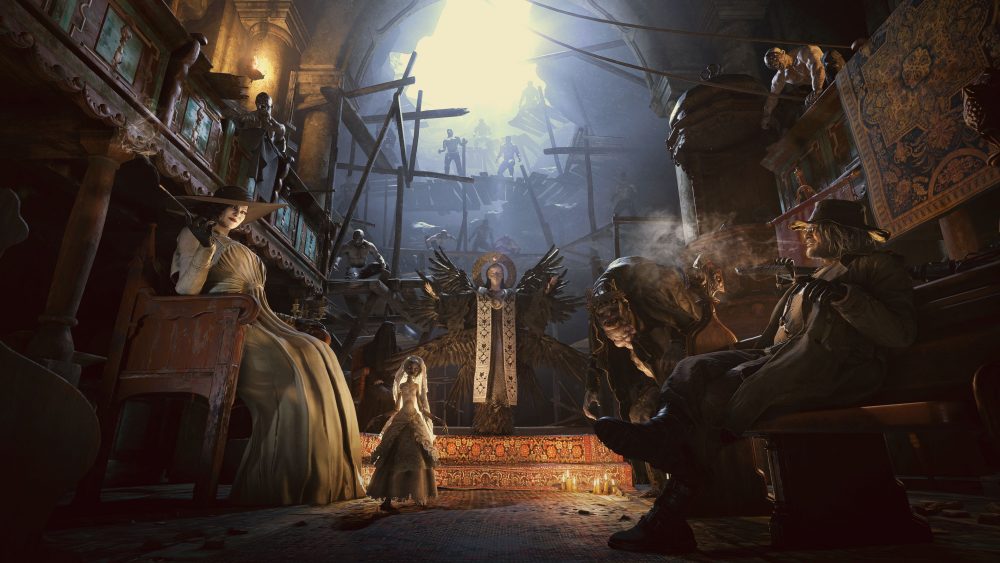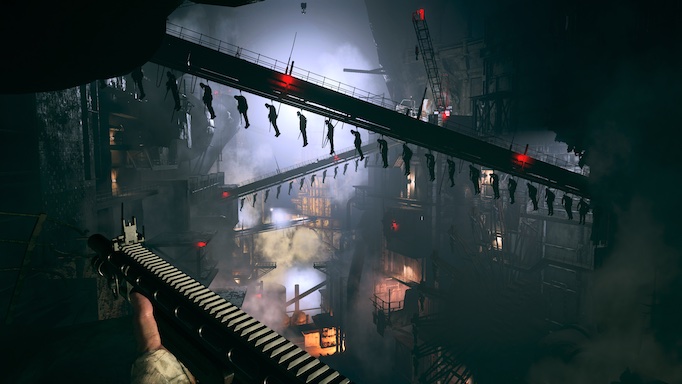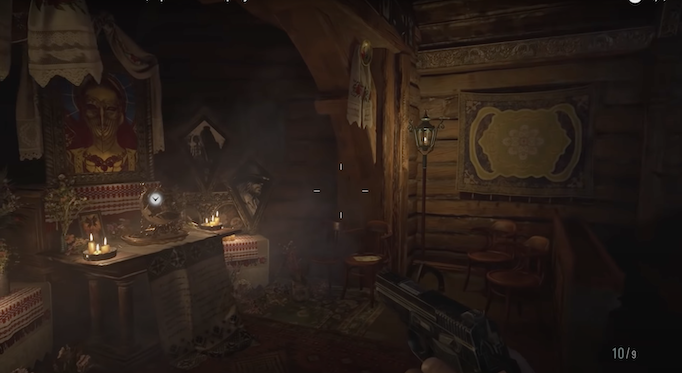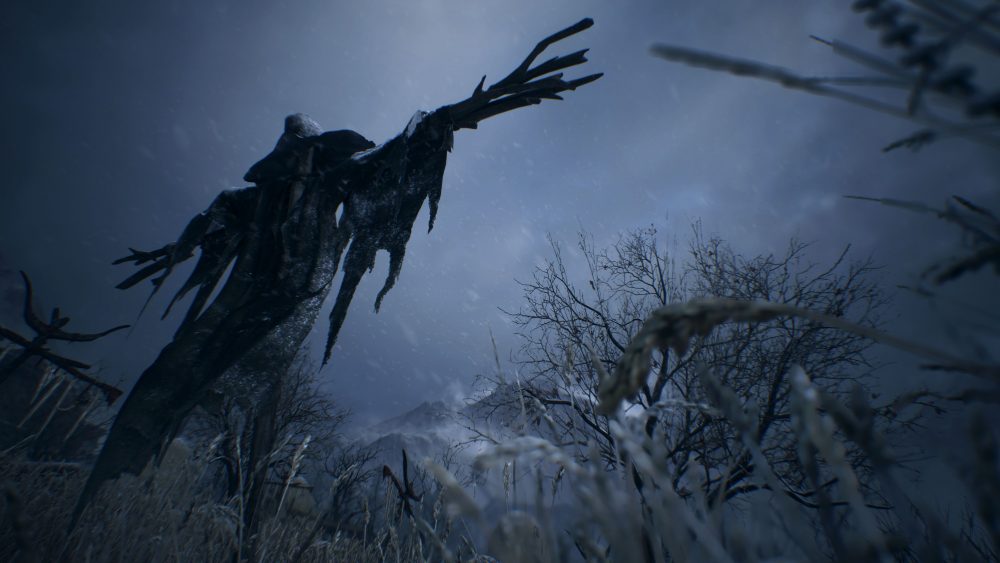During the opening hours of my playthrough of Resident Evil Village, I felt disconcerted, teetering towards disgruntled. I was flummoxed by its repeated rule-breaking of key tenants of the survival horror genre.
A lot of the suspense in survival games derives from feeling trapped with little to no way out, like when a horde of enemies stands between you and safety and you only have a few bullets in your chamber. That’s why it was strange that Village was decidedly less challenging than past Resident Evil titles with ammo rarely in short supply. Normally in Resident Evil, the player has to run past enemies to preserve bullets, but every kill in Village grants the player supplies they can use to craft ammo and health, meaning you benefit from taking them on. The game even features a merchant who can upgrade your weaponry to the point where the game is a breeze to beat.
A couple of hours in I realized: Resident Evil Village isn’t a survival game. Unlike most of its predecessors, it’s an action-adventure. That revelation completely changed how I looked at Village, allowing me to enjoy it for what it is rather than what it isn’t. And I enjoyed it a heck of a lot.
Review copy provided by Capcom. Reviewed on Xbox Series X.
After the negative response to Resident Evil 5 and 6, Capcom decided to go back to basics with Resident Evil VII: Biohazard. The game received a lot of praise for returning to the series’ roots and nailing the fundamentals of the survival horror genre. Its developers clearly weren’t interested in doing the same thing twice, though, choosing this time to design a game that takes more inspiration from the action-heavy Resident Evil 4 than earlier titles in the series.
While the genre shift may disappoint some fans of Biohazard, Capcom isn’t turning away from what makes the series special. They’re simply retooling the Resident Evil formula for the modern era where action-adventure titles like The Last of Us and God of War dominate the conversation (and the sales charts.)
Trading the mechanics of a survival game for those of an action-adventure, Village puts less emphasis on high-pressure gameplay and jump scares. Instead, it focuses squarely on building a beautiful and beautifully grotesque world. Resident Evil has always boasted amazing creature design and iconic game environments. As an action-adventure title, Village gets to spend more time exploring the alluring setting of the game and the creatures who call it home.
The game takes place in an unnamed European village. The protagonist is charged with defeating Mother Miranda, a figure the residents treat as some sort of deity, and the four lords serving under her. The lords are some of the most enthralling villains in all of Resident Evil. If you spend any amount of time on the internet then you’ve probably run across the fan art and memeification of Lady Dimitrescu, the 9-foot tall maybe-vampire aristocrat and the first lord Ethan encounters. But other lords, like the mutant doll maker Donna Beneviento and half-man, half-fish Salvatore Moreau, also strike a chord.
The design of the lords and their domains is one of the highlights of Resident Evil Village. The game is a visual marvel and an early demonstrator of the graphical power of next-gen hardware. Locations like Lady Dimitrescu’s candlelit castle and Heisenberg’s humanoid-building factory are absolutely striking, especially on a 4K television with HDR. Resident Evil is a fantastic showcase for the Xbox Series X in particular since the console received as much first-party content as the PlayStation 5 thus far.
While the shift to action-adventure carries certain benefits, it brings along a new set of expectations. Ethan’s arsenal is comparable in quality to his loadout in Biohazard, but it comes up short in comparison to weapon sets found in other adventure titles. They’re serviceable, never a source of frustration, but that’s the most that can be said about them. Hopefully, Capcom refines the action in future Resident Evil games now that the series has made the shift to action-adventure.
Resident Evil Village‘s narrative is its biggest pitfall. The game is fairly light on cutscenes and dialogue, which is to its benefit since it allows the environmental storytelling to shine. But what is there is almost uniformly bad. Ethan Winters doesn’t have much of a personality and the story is largely uncompelling, with plot holes big enough to drive a truck through. Without delving into spoilers, certain plot developments even border on misogynistic.
Historically Resident Evil games are extremely campy, but the camp works when paired with likable protagonists. Players of Resident Evil 2, for example, care about Claire and Leon even if some of the plot developments border on the absurd. But there isn’t enough to Ethan for players to glom on to; we’re never even shown his face. If the game was in the third-person perspective rather than first-person then maybe Ethan would feel more distinct and Capcom would have made more of an effort to humanize him.
Thankfully, the story is not what draws most players to Resident Evil. Resident Evil Village takes the series in a new direction, even a new genre, which gives the game freedom to explore different forms of horror. While it lacks the signature jump scares of past titles, Village is a new kind of terrifying, deeply unsettling in the most satisfying way.




